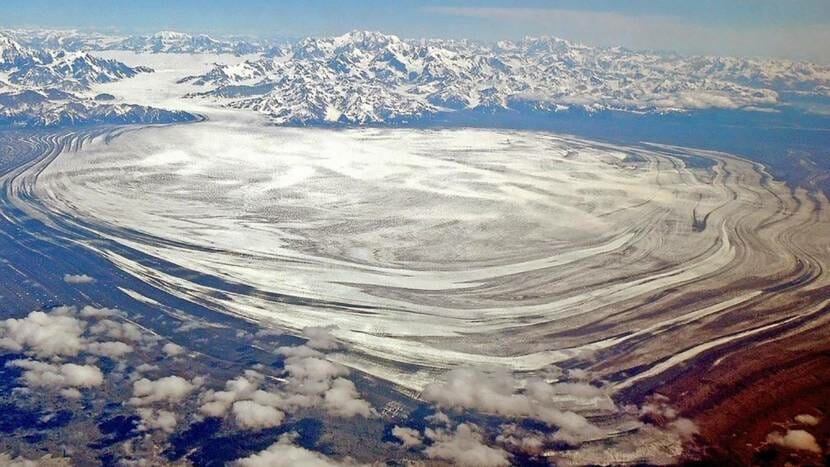
Researchers from the University of Alaska Fairbanks began looking at big changes to one of the state’s biggest glaciers on Monday. It’s melting so rapidly that it could create a new bay north of Yakutat.
What’s happening at the Malaspina Glacier may be the largest landscape transformation underway in the United States.
“You’re looking at something becoming a big ocean bay, essentially, that’s the size of a small state,” said Martin Truffer, a glaciologist with the Geophysical Institute and a physics professor at UAF. He said he doesn’t like to pick on Rhode Island, but the Malaspina is bigger. Truffer has studied big ice from Greenland to Antarctica.
“The Malaspina is kind of a hard glacier not to pay attention to if you’re a glaciologist. It’s a really big glacier,” he said.
It sits in Wrangell-St. Elias National Park and flows onto lowland plains on the north side of Yakutat Bay. As it retreats, it’s opening up lakes that connect to the ocean. The National Science Foundation recently awarded Truffer’s team $1.3 million dollars to study the Malaspina’s retreat.
“The goal of the project is really to suss out a bit more how likely that is, and what rates are we talking about. You know, where are we going to be in fifty years, are you going to be in one hundred years,” he explained.
His team will measure how fast the glacier moves and how fast it’s melting in different places. They’ll pay special attention to the front of the glacier, where ice is turning into those lakes.
They plan to find out whether the Malaspina Glacier will disappear completely based on different climate models. Truffer said meltwater from the Malaspina Glacier makes Alaska a big contributor to global sea-level rise.
“Some of these changes that we’re seeing are really, actually hard to kind of wrap your head around what’s actually going on. And this is really one of those places,” Truffer said.
Truffer said it’s too soon to tell what the impacts on Yakutat hunters and fishers may be, but he plans to make community connections and find out.
This isn’t the first time a big glacier has melted in Alaska. Yakutat Bay used to be full of ice from the Hubbard Glacier — about a thousand years ago.
